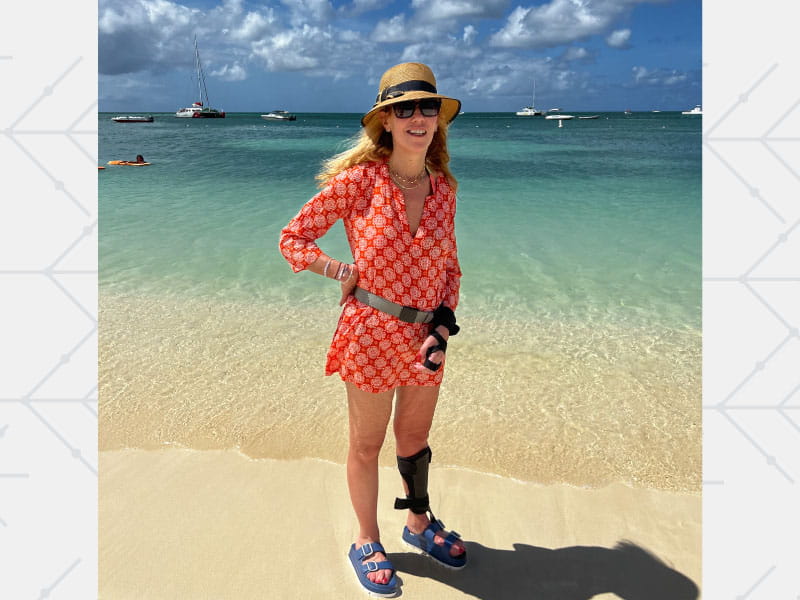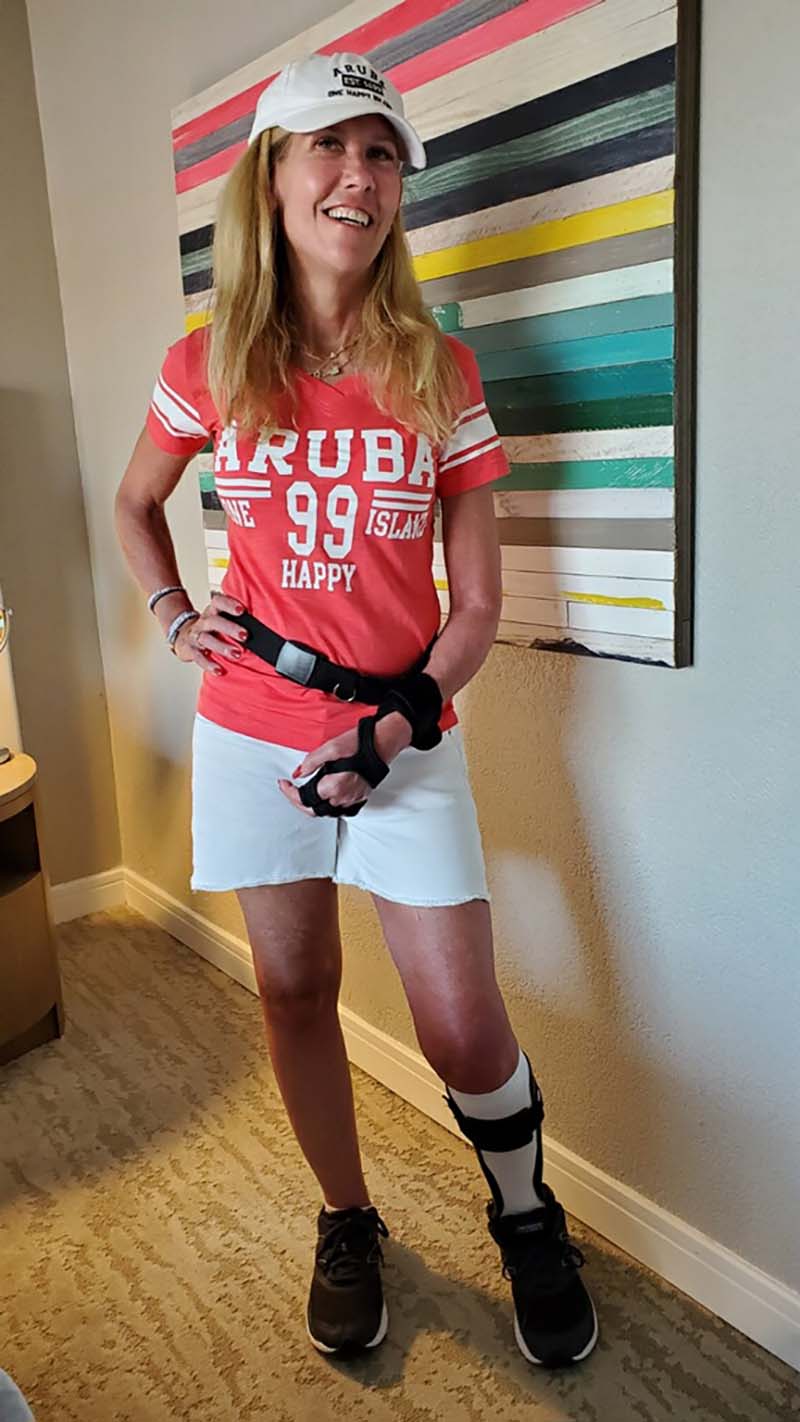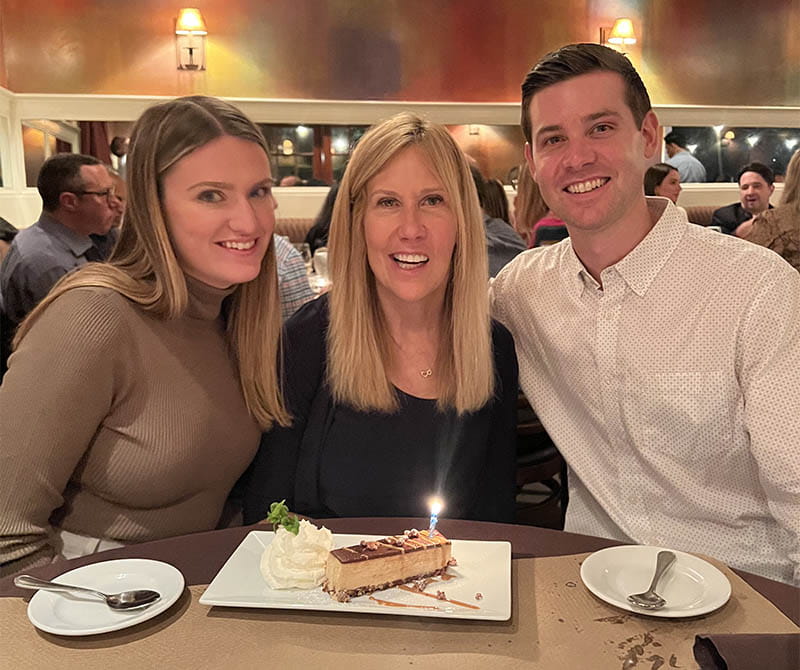'I need to walk again': Stroke survivor keeps promise to her husband, who died on 9/11
By Diane Daniel, American Heart Association News

From her hospital bed, Beth Murphy demanded that a television be brought into her room. She needed to see the face of her husband.
Kevin Murphy died on 9/11 as he worked at the World Trade Center in New York City. Of the 2,977 killed that day in separate terror attacks, Kevin and 2,752 others died at the twin towers. He was 40 years old.
On the 20th anniversary of 9/11, Beth couldn't attend a memorial event with her children, Connor and Caitlyn, who were 7 and 4 when their dad died.
Instead, Beth was processing the news her doctors delivered the day before: She might never again use the left side of her body.
When her husband's image appeared on screen, Beth spoke to him through tears. "Kevin, I need to live for these kids," she said, "and I need to walk again. I promise I will do everything I can to get stronger."
Earlier that week, Beth woke up with a massive, pounding headache.
Caitlyn, who had been living with her mother in Northport, New York, was working from home that Tuesday morning.
When Caitlyn saw her mom, she noticed one of Beth's eyes looked red and puffy. She knew her mother had a high tolerance for pain, so if she was complaining about a headache, it must be serious.
Connor, who was living in Manhattan at the time, also was at the house so the family could be together before the 9/11 event.
"Mom, you really need to go to the doctor," Caitlyn said. "This isn't like you."
"I'm just stressed because of everything going on this week," said Beth, who worked as a counselor for veterans, particularly in suicide prevention.
That afternoon, Beth went to her gym.
A cheerleader in high school and college, Beth had always made time to exercise. Powerlifting was her latest passion. She hoped that lifting weights would alleviate the stress she thought was causing her headache.
Afterward, she felt no better.
Before dinner, Caitlyn found her mother hunched over on the couch.
The left side of Beth's face was drooping. Her speech was slurred.
"Mom, I think you're having a stroke," Caitlyn said.
Beth insisted she was fine.
Caitlyn knew the acronym FAST, a way to remember the signs of a stroke: Face drooping, Arm weakness or Speech difficulty means it's Time to call 911.
"Connor!" she yelled. "Call 911! Mom's having a stroke."
Beth received clot-busting medication in the ambulance. At the hospital, diagnostic imaging showed that Beth had a large clot on the right side of her brain.
She was airlifted to another hospital to have the clot removed in a procedure called a thrombectomy. She also had dissected carotid arteries and two brain bleeds.
Three days later, Beth woke up but she couldn't move her left side. She had trouble swallowing and talking.
The good news: She had no cognitive deficits.
After three weeks in the hospital, Beth spent two months in rehabilitation. The entire time, she pushed herself to make good on her vow to Kevin.
Her speech improved. Learning to swallow took longer. She eventually learned to bear weight on her left leg. Then she began taking steps with a leg brace and a four-pronged cane.
"I was the enthusiastic patient that kept saying I wanted to walk upstairs and do wall sits," she said. "I take on each challenge, and I want to succeed."

She celebrated many "firsts," including putting on her own clothes and driving (with the help of special equipment). Now a year later, she can walk alone in her neighborhood with a cane. She recently walked 3 miles with a friend in a charity event.
"I want other people who have had strokes to realize that there is so much they can learn to do and keep doing," she said. "Every little bit counts. Relish in the little victories."
Doctors told Beth that twisted arteries led to a tear and a clot that caused her stroke.
Beth continues to see a physical therapist and two occupational therapists, one for fine motor skills and the other for strength. She recently started speaking with a neuropsychologist to help level her emotions and battle the loneliness she feels in the evenings.
One of Beth's biggest disappointments was having to leave her job to focus on healing.
She's always worked in helping professions, including guidance counselor and veteran assistance. Now she hopes to continue that mission by helping other stroke survivors.
One of Beth's next goals is to dance at Connor's upcoming wedding.
"I have to be able to dance with my son and smile like I've never smiled before," she said.

Caitlyn is sure her mother can meet any goal.
"When I first saw her walk, it was incredible. The other day she sent me a video of her squeezing something with her left hand, and it was amazing," Caitlyn said.
"My mom is my hero."
Stories From the Heart chronicles the inspiring journeys of heart disease and stroke survivors, caregivers and advocates.
If you have questions or comments about this American Heart Association News story, please email [email protected].





